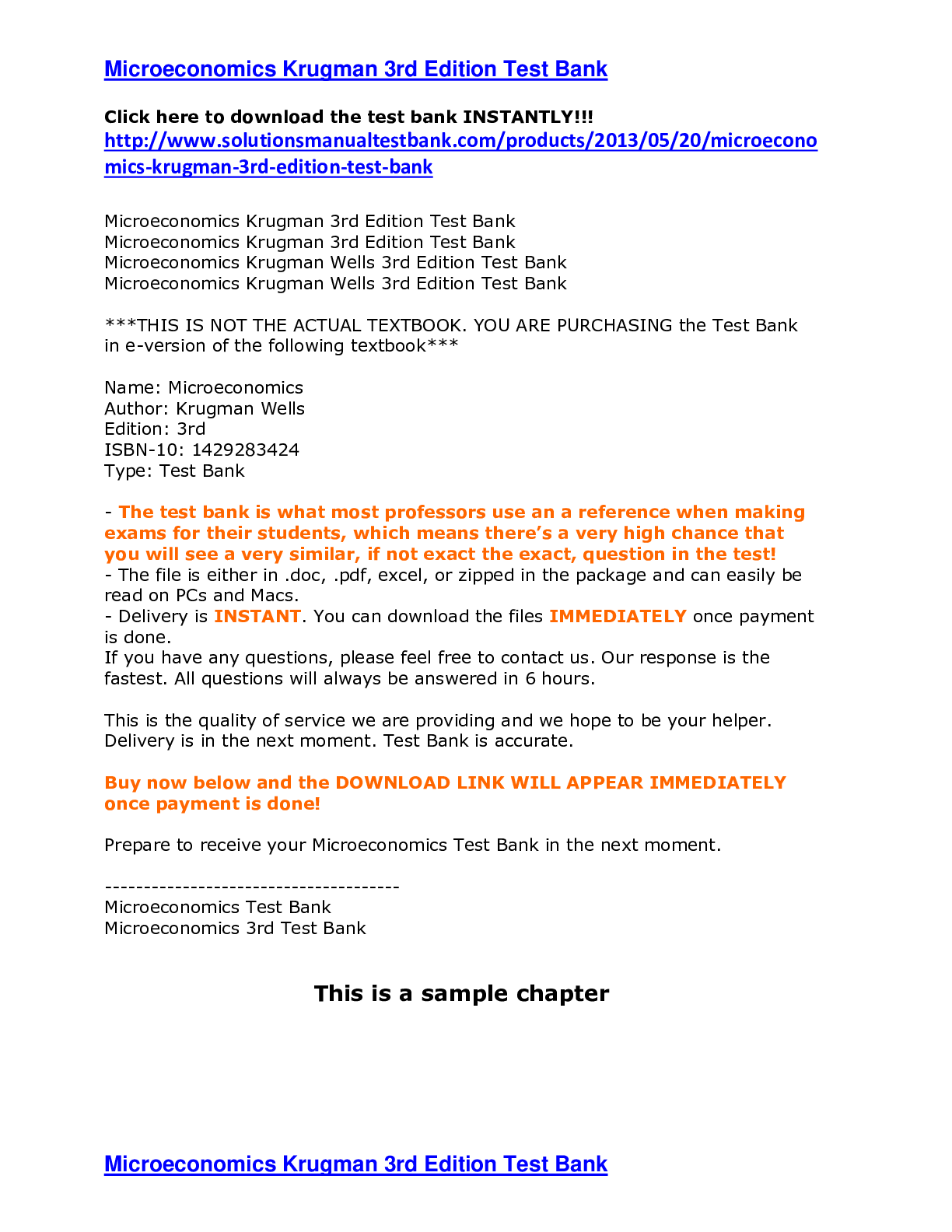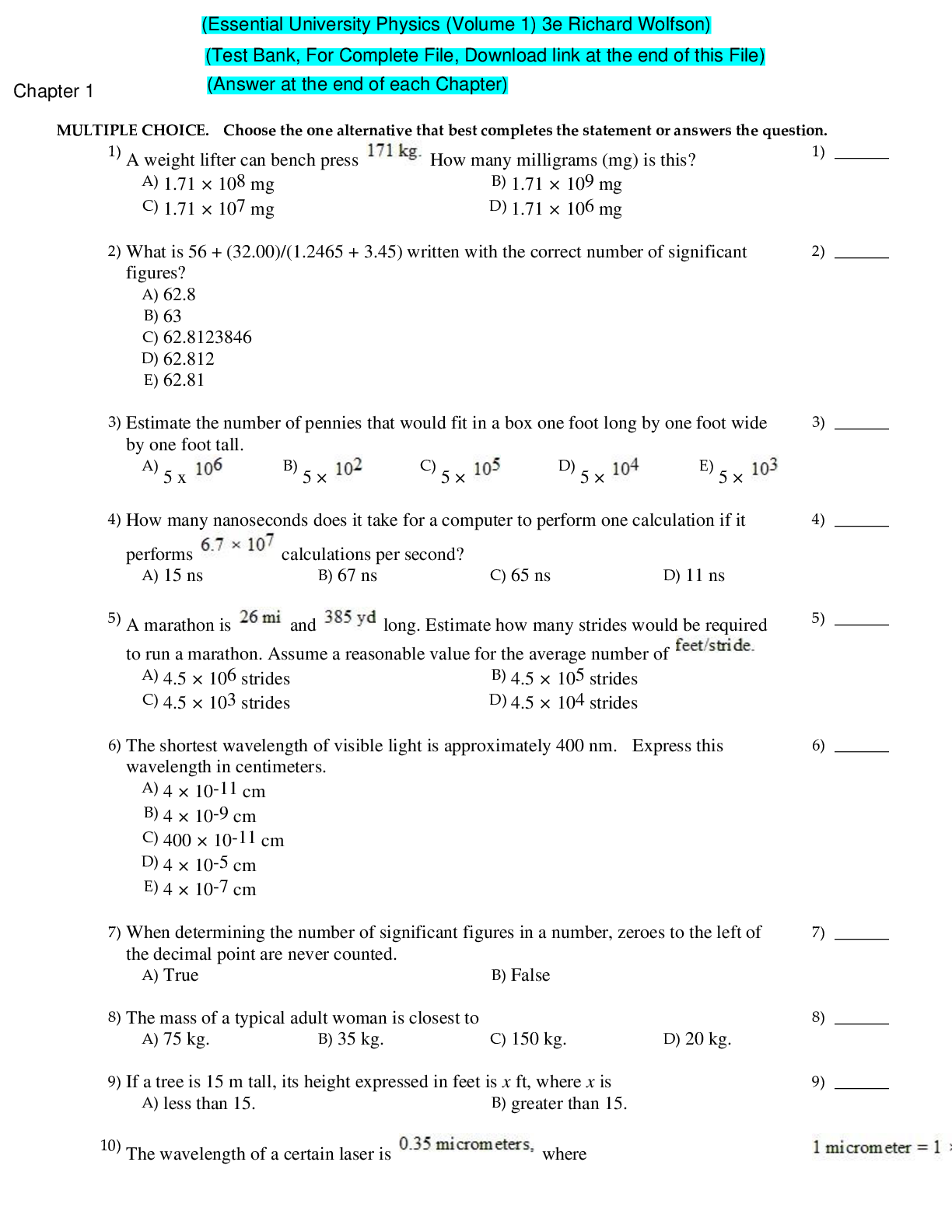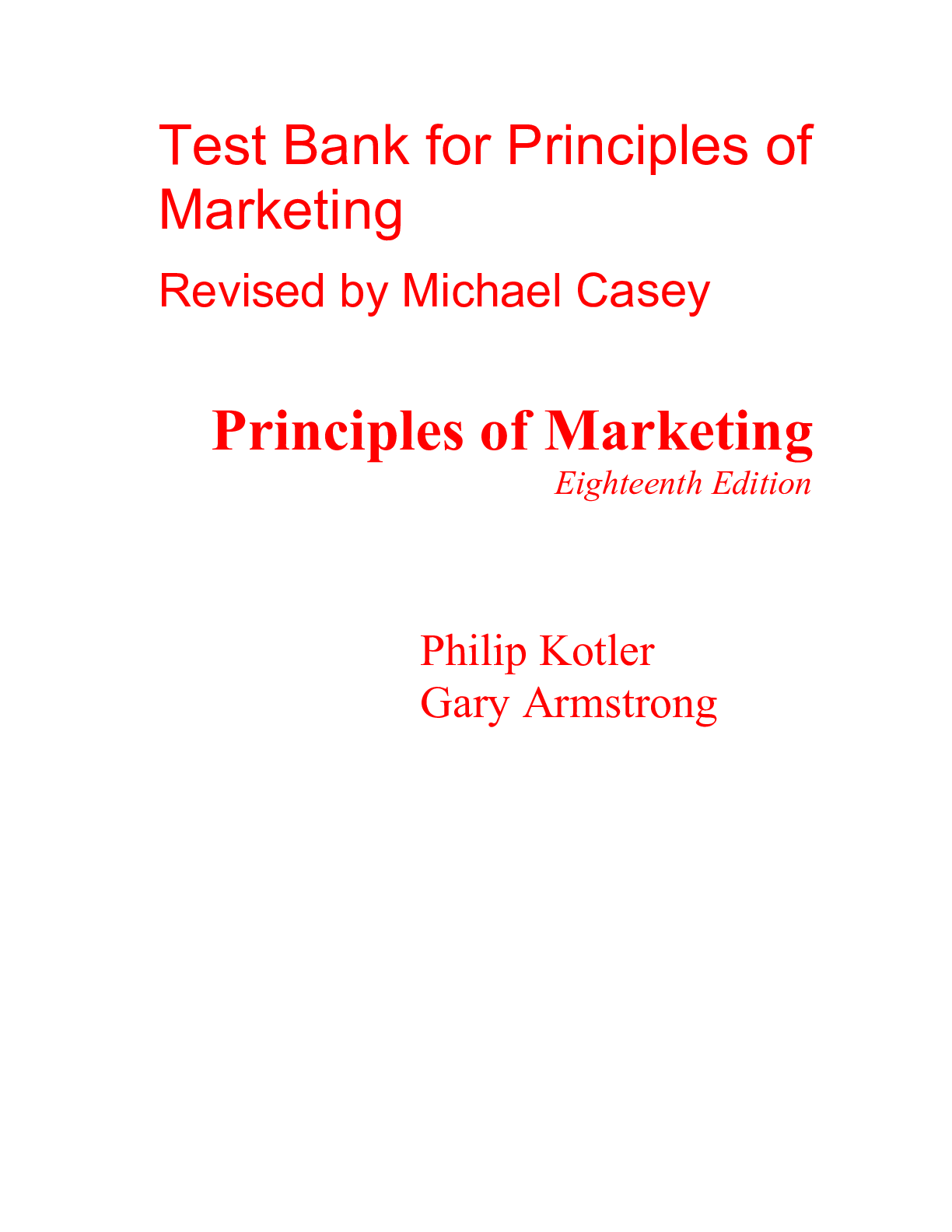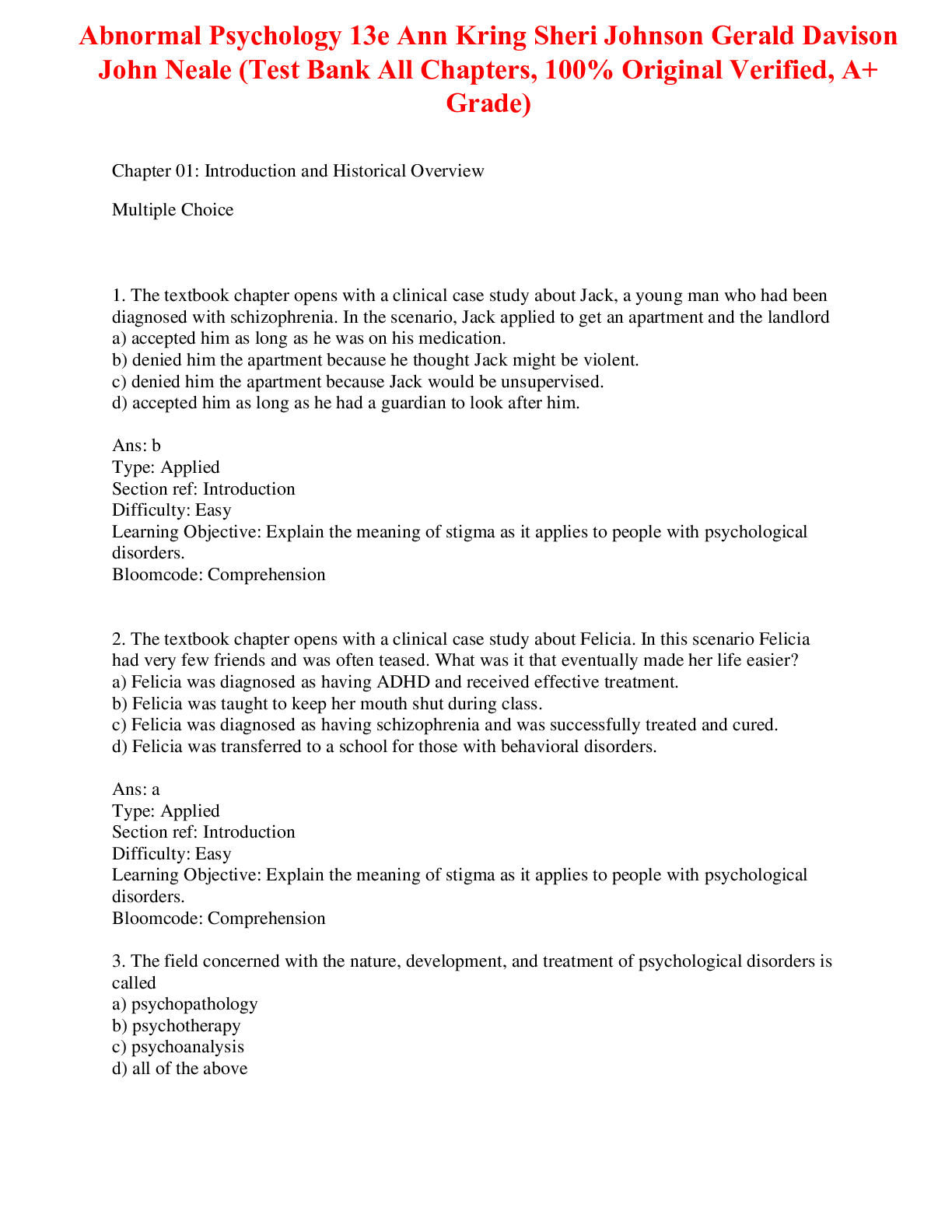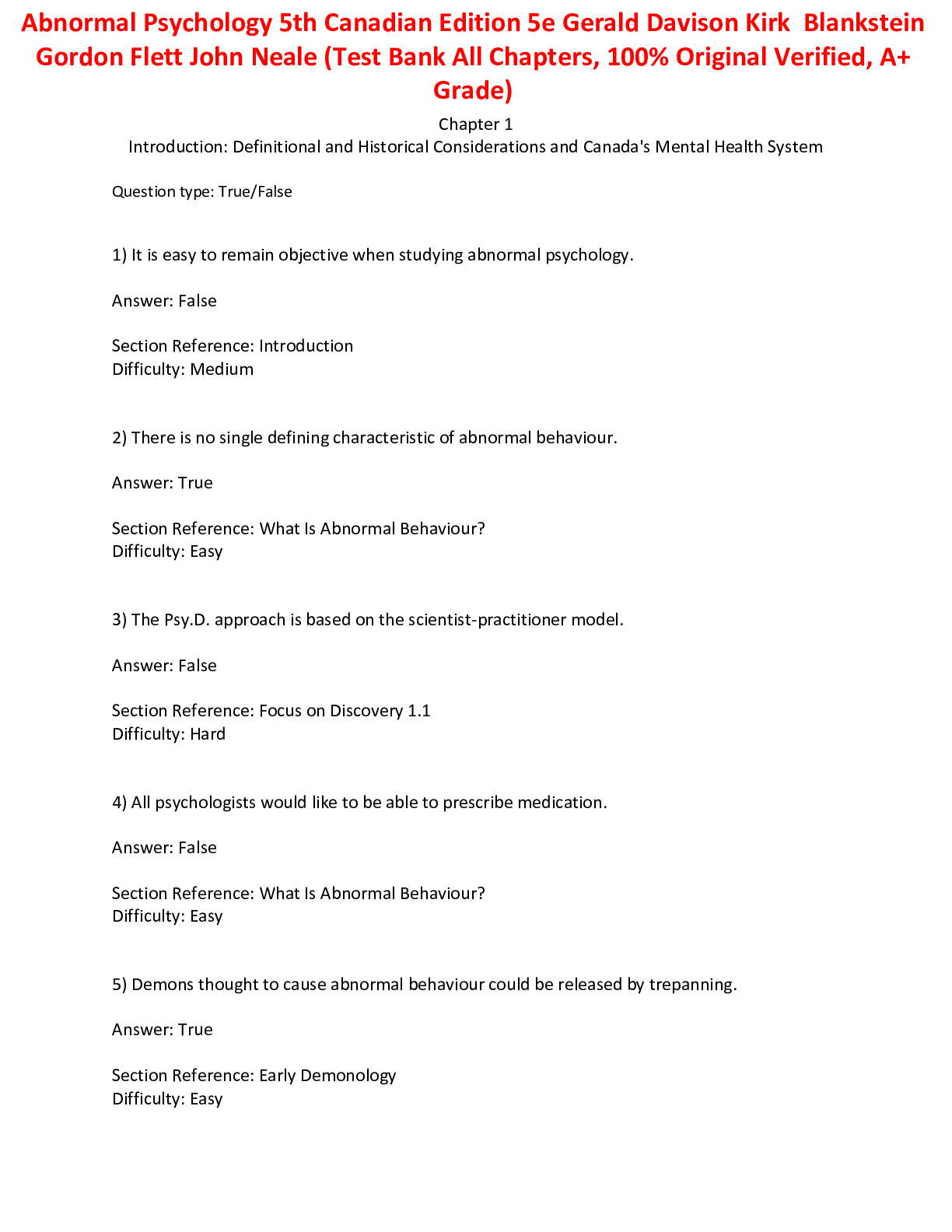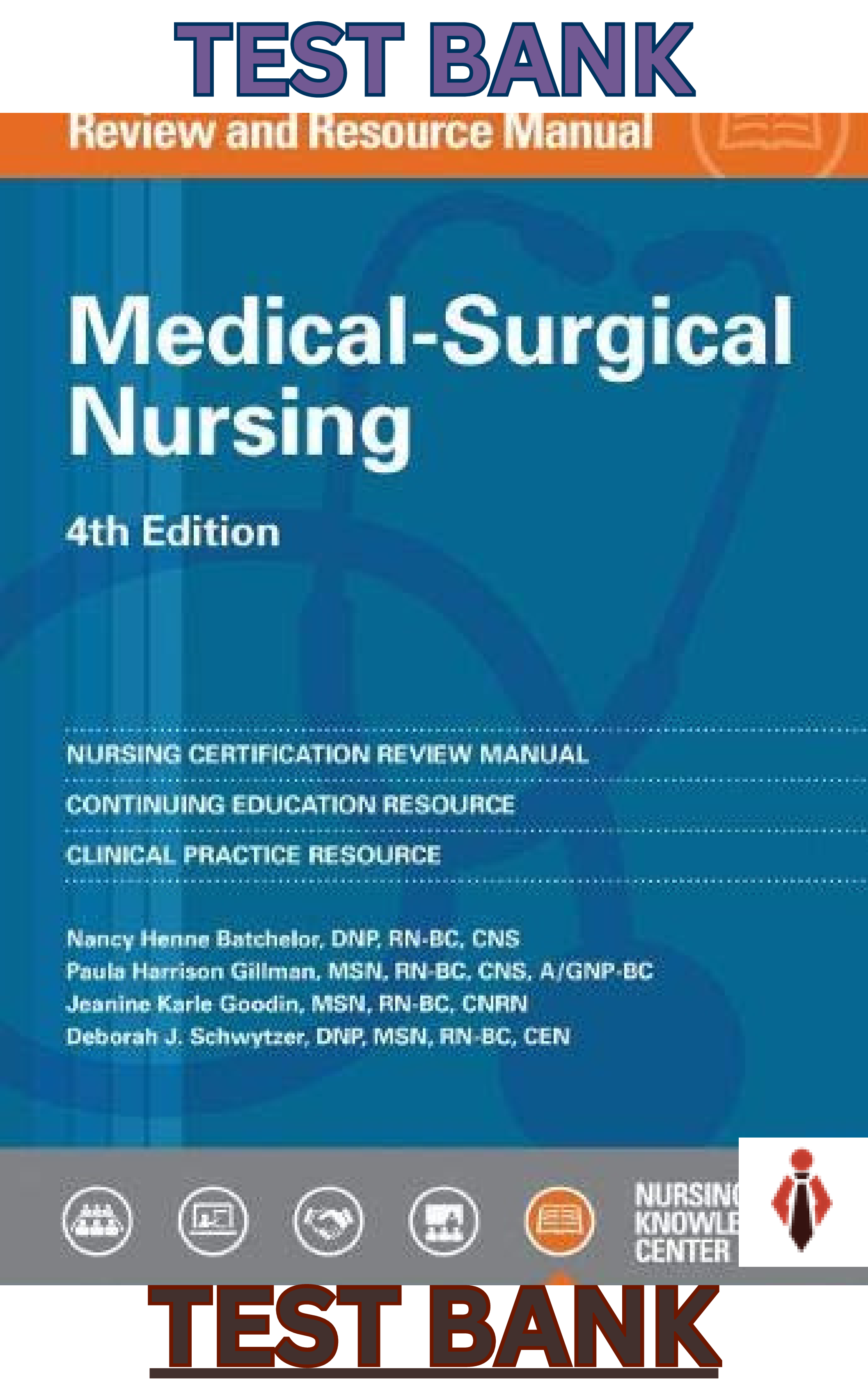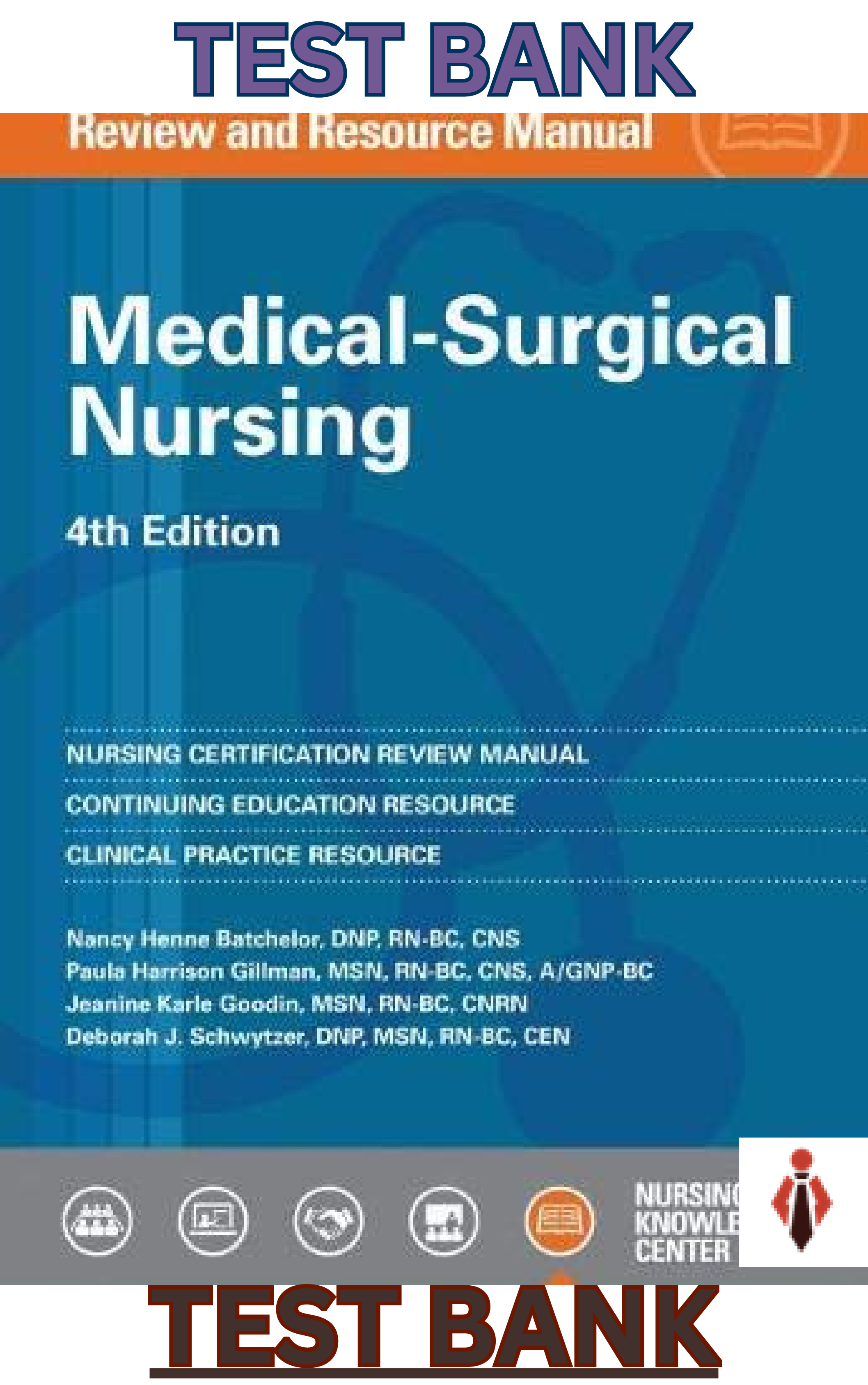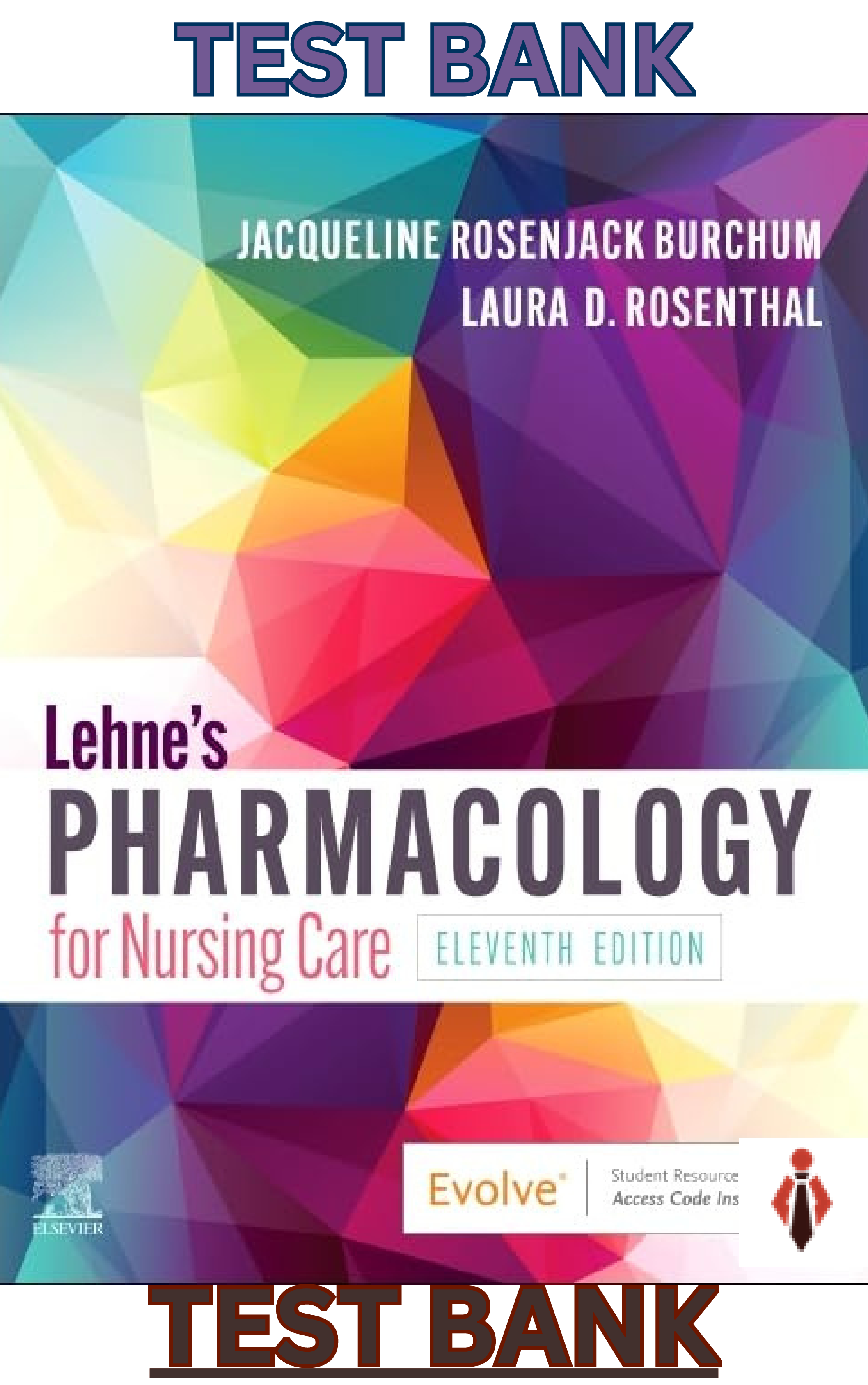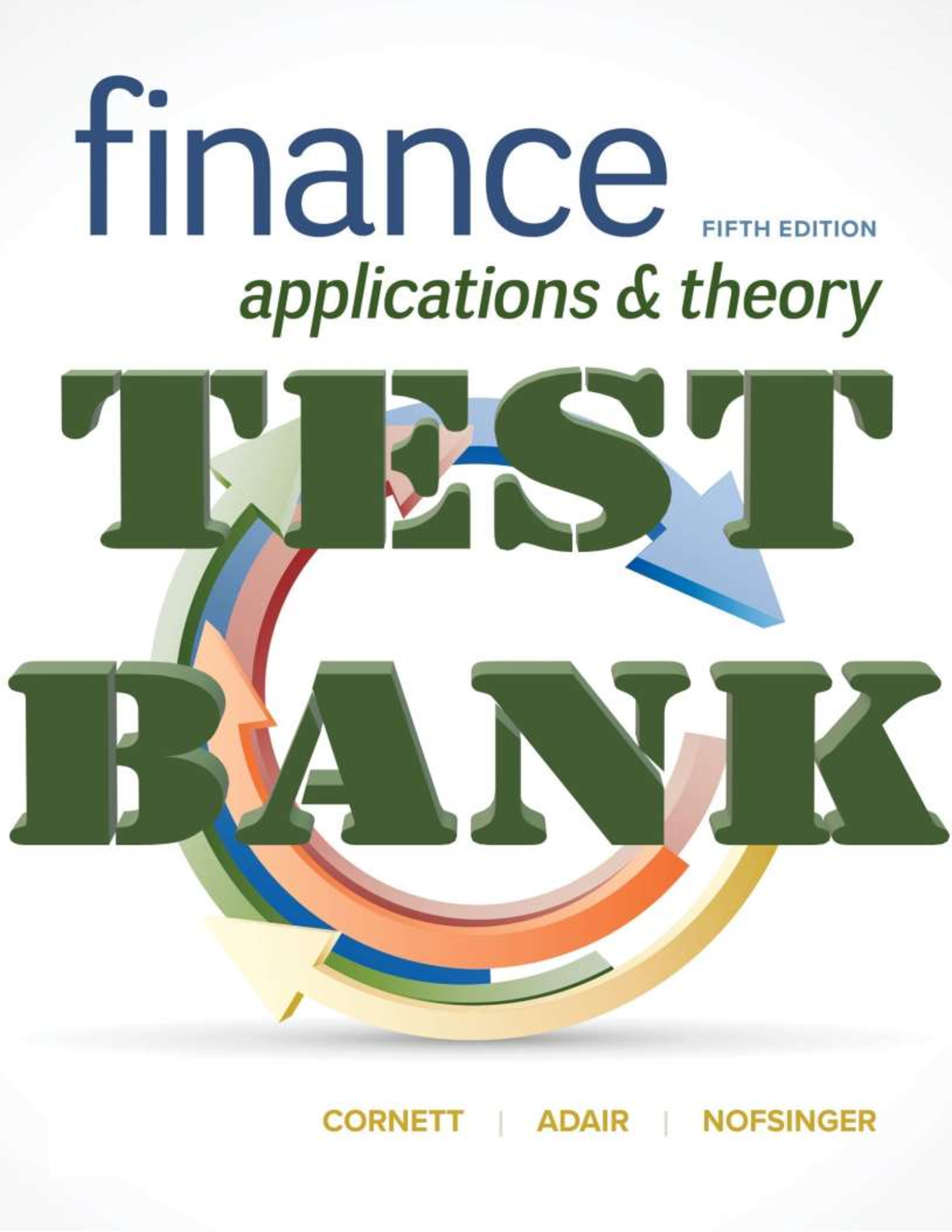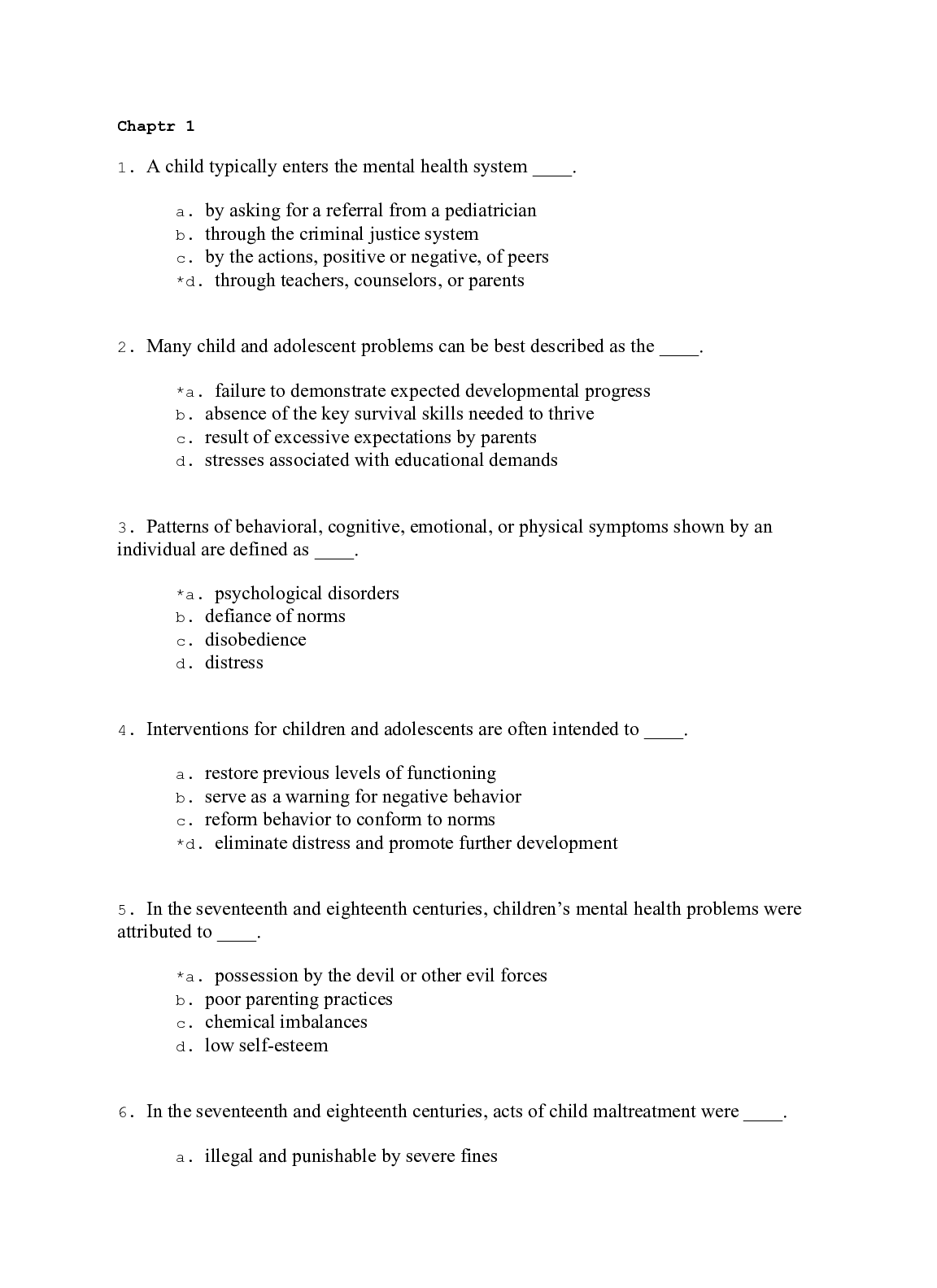Pharmacology > TEST BANK > TEST BANK for Pharmacology-and-the-Nursing-Process-9th-Edition (All)
TEST BANK for Pharmacology-and-the-Nursing-Process-9th-Edition
Document Content and Description Below
TEST BANK for Pharmacology-and-the-Nursing-Process- Chapter 1 - The Nursing Process and Drug Therapy 3 Chapter 2 - Pharmacologic Principles 7 Chapter 3 - Lifespan Considerations 13 Chapter 4 - Cul... tural Legal and Ethical Considerations 19 Chapter 5 - Medication Errors Preventing and Responding 25 Chapter 6 - Patient Education and Drug Therapy 29 Chapter 7 - Over-the-Counter Drugs and Herbal and Dietary Supplements 34 Chapter 8 - Gene Therapy and Pharmacogenomics 38 Chapter 9 - Photo Atlas of Drug Administration 42 Chapter 10 - Analgesic Drugs 50 Chapter 11 - General and Local Anesthetics 57 Chapter 12 - Central Nervous System Depressants and Muscle Relaxants 61 Chapter 13 - Central Nervous System Stimulants and Related Drugs 66 Chapter 14 - Antiepileptic Drugs 70 Chapter 15 - Anti-Parkinson Drugs 75 Chapter 16 - Psychotherapeutic Drugs 80 Chapter 17 - Substance Use Disorder 87 Chapter 18 - Adrenergic Drugs 92 Chapter 19 - Adrenergic-Blocking Drugs 97 Chapter 20 - Cholinergic Drugs 102 Chapter 21 - Cholinergic-Blocking Drugs 107 Chapter 22 - Antihypertensive Drugs 112 Chapter 23 - Antianginal Drugs 118 Chapter 24 - Heart Failure Drugs 124 Chapter 25 - Antidysrhythmic Drugs 129 Chapter 26 - Coagulation Modifier Drugs 134 Chapter 27 - Antilipemic Drugs 140 Chapter 28 - Diuretic Drugs 145 Chapter 29 - Fluids and Electrolytes 151 Chapter 30 - Pituitary Drugs 157 Pharmacology and the Nursing Process 9th Edition 9780323529495 Chapter 31 - Thyroid and Antithyroid Drugs 161 Chapter 32 - Antidiabetic Drugs 166 Chapter 33 - Adrenal Drugs 174 Chapter 34 - Women’s Health Drugs 178 Chapter 35 - Men’s Health Drugs 185 Chapter 36 - Antihistamines Decongestants Antitussives and Expectorants 189 Chapter 37 - Respiratory Drugs 194 Chapter 38 - Antibiotics Part 1 199 Chapter 39 - Antibiotics Part 2 206 Chapter 40 - Antiviral Drugs 211 Chapter 41 - Antitubercular Drugs 216 Chapter 42 - Antifungal Drugs 221 Chapter 43 - Antimalarial Antiprotozoal and Anthelmintic Drugs 226 Chapter 44 - Anti-inflammatory and Antigout Drugs 231 Chapter 45 - Antineoplastic Drugs Part 1 Cancer Overview and Cell Cycle 236 Chapter 46 - Antineoplastic Drugs Part 2 Cell Cycle Nonspecific and Misc. Drugs 242 Chapter 47 - Biologic Response–Modifying and Antirheumatic Drugs 247 Chapter 48 - Immunosuppressant Drugs 252 Chapter 49 - Immunizing Drugs 257 Chapter 50 - Acid-Controlling Drugs 262 Chapter 51 - Bowel Disorder Drugs 268 Chapter 52 - Antiemetic and Antinausea Drugs 275 Chapter 53 - Vitamins and Minerals 280 Chapter 54 - Anemia Drugs 286 Chapter 55 - Nutritional Supplements 292 Chapter 56 - Drugs 296 Chapter 57 - Ophthalmic Drugs 302 Chapter 58 - Otic Drugs 307 Pharmacology and the Nursing Process 9th Edition 9780323529495 Chapter 01: The Nursing Process and Drug Therapy Lilley: Pharmacology and the Nursing Process, 9th Edition MULTIPLE CHOICE 1. The nurse is developing a human needs statement for a patient who has a new diagnosis of heart failure. Identification of human needs statements occur with which of these activities? a. Collection of patient data b. Administering interventions c. Deciding on patient outcomes d. Documenting the patient’s behavior ANS: A Identification of human needs occurs with the collection of patient data. DIF: Cognitive Level: Understanding (Comprehension) TOP: Nursing Process: Human Needs Statement MSC: NCLEX: Safe and Effective Care Environment: Management of Care 2. The patient is to receive oral guaifenesin (Mucinex) twice a day. Today, the nurse was busy and gave the medication 2 hours after the scheduled dose was due. What type of problem does this represent? a. “Right time” b. “Right dose” c. “Right route” d. “Right medication” ANS: A “Right time” is correct because the medication was given more than 30 minutes after the scheduled dose was due. “Dose” is incorrect because the dose is not related to the time the medication administration is scheduled. “Route” is incorrect because the route is not affected. “Medication” is incorrect because the medication ordered will not change. DIF: Cognitive Level: Applying (Application) TOP: Nursing Process: Implementation MSC: NCLEX: Safe and Effective Care Environment: Safety and Infection Control 3. The nurse has been monitoring the patient’s progress on a new drug regimen since the first dose and documenting the patient’s therapeutic response to the medication. Which phase of the nursing process do these actions illustrate? a. Human needs statement b. Planning c. Implementation d. Evaluation ANS: D Monitoring the patient’s progress, including the patient’s response to the medication, is part of the evaluation phase. Planning, implementation, and human needs statement are not illustrated by this example. Chapter 1 - The Nursing Process and Drug Therapy 3 Pharmacology and the Nursing Process 9th Edition 9780323529495 DIF: Cognitive Level: Understanding (Comprehension) TOP: Nursing Process: Evaluation MSC: NCLEX: Safe and Effective Care Environment: Management of Care 4. The nurse is assigned to a patient who is newly diagnosed with type 1 diabetes mellitus. Which statement best illustrates an outcome criterion for this patient? a. The patient will follow instructions. b. The patient will not experience complications. c. The patient will adhere to the new insulin treatment regimen. d. The patient will demonstrate correct blood glucose testing technique. ANS: D “Demonstrating correct blood glucose testing technique” is a specific and measurable outcome criterion. “Following instructions” and “not experiencing complications” are not specific criteria. “Adhering to new regimen” would be difficult to measure. DIF: Cognitive Level: Applying (Application) TOP: Nursing Process: Planning MSC: NCLEX: Safe and Effective Care Environment: Management of Care 5. Which activity best reflects the implementation phase of the nursing process for the patient who is newly diagnosed with hypertension? a. Providing education on keeping a journal of blood pressure readings b. Setting goals and outcome criteria with the patient’s input c. Recording a drug history regarding over-the-counter medications used at home d. Formulating human needs statements regarding insufficient knowledge related to the new treatment regimen ANS: A Education is an intervention that occurs during the implementation phase. Setting goals and outcomes reflects the planning phase. Recording a drug history reflects the assessment phase. Formulating human needs statements reflects analysis of data as part of planning. DIF: Cognitive Level: Applying (Application) TOP: Nursing Process: Implementation MSC: NCLEX: Safe and Effective Care Environment: Management of Care 6. The medication order reads, “Give ondansetron (Zofran) 4 mg, 30 minutes before beginning chemotherapy to prevent nausea.” The nurse notes that the route is missing from the order. What is the nurse’s best action? a. Give the medication intravenously because the patient might vomit. b. Give the medication orally because the tablets are available in 4-mg doses. c. Contact the prescriber to clarify the route of the medication ordered. d. Hold the medication until the prescriber returns to make rounds. ANS: C A complete medication order includes the route of administration. If a medication order does not include the route, the nurse must ask the prescriber to clarify it. The intravenous and oral routes are not interchangeable. Holding the medication until the prescriber returns would mean that the patient would not receive a needed medication. DIF: Cognitive Level: Applying (Application) Chapter 1 - The Nursing Process and Drug Therapy 4 Pharmacology and the Nursing Process 9th Edition 9780323529495 TOP: Nursing Process: Implementation MSC: NCLEX: Safe and Effective Care Environment: Management of Care 7. When the nurse considers the timing of a drug dose, which factor is appropriate to consider when deciding when to give a drug? a. The patient’s ability to swallow b. The patient’s height c. The patient’s last meal d. The patient’s allergies ANS: C The nurse must consider specific pharmacokinetic/pharmacodynamic drug properties that may be affected by the timing of the last meal. The patient’s ability to swallow, height, and allergies are not factors to consider regarding the timing of the drug’s administration. DIF: Cognitive Level: Understanding (Comprehension) TOP: Nursing Process: Assessment MSC: NCLEX: Safe and Effective Care Environment: Management of Care 8. The nurse is performing an assessment of a newly admitted patient. Which is an example of subjective data? a. Blood pressure 158/96 mm Hg b. Weight 255 pounds c. The patient reports that he uses the herbal product ginkgo. d. The patient’s complete blood count results. ANS: C Subjective data include information shared through the spoken word by any reliable source, such as the patient. Objective data may be defined as any information gathered through the senses or that which is seen, heard, felt, or smelled. A patient’s blood pressure, weight, and laboratory tests are all examples of objective data. DIF: Cognitive Level: Understanding (Comprehension) TOP: Nursing Process: Assessment MSC: NCLEX: Safe and Effective Care Environment: Management of Care MULTIPLE RESPONSE 1. When giving medications, the nurse will follow the rights of medication administration. The rights include the right documentation, the right reason, the right response, and the patient’s right to refuse. Which of these are additional rights? (Select all that apply.) a. Right drug b. Right route c. Right dose d. Right diagnosis e. Right time f. Right patient ANS: A, B, C, E, F Additional rights of medication administration must always include the right drug, right dose, right time, right route, and right patient. The right diagnosis is incorrect. Chapter 1 - The Nursing Process and Drug Therapy 5 Pharmacology and the Nursing Process 9th Edition 9780323529495 DIF: Cognitive Level: Remembering (Knowledge) TOP: Nursing Process: Implementation MSC: NCLEX: Safe and Effective Care Environment: Safety and Infection Control 2. Place the phases of the nursing process in the correct order, with 1 as the first phase and 5 as the last phase. (Select all that apply.) a. Planning b. Evaluation c. Assessment d. Implementation e. Human needs statement ANS: A, B, C, D, E The nursing process is an ongoing process that begins with assessing and continues with human needs statement, planning, implementing, and evaluating. DIF: Cognitive Level: Applying (Application) TOP: Nursing Process: General MSC: NCLEX: Safe and Effective Care Environment: Management of Care Chapter 1 - The Nursing Process and Drug Therapy 6 Pharmacology and the Nursing Process 9th Edition 9780323529495 Chapter 02: Pharmacologic Principles Lilley: Pharmacology and the Nursing Process, 9th Edition MULTIPLE CHOICE 1. The patient is receiving two different drugs. At current dosages and dosage forms, both drugs have the same concentration of the active ingredient. Which term is used to identify this principle? a. Bioequivalent b. Synergistic c. Prodrugs d. Steady state ANS: A Two drugs absorbed into the circulation in the same amount (in specific dosage forms) have the same bioavailability; thus, they are bioequivalent. A drug’s steady state is the physiologic state in which the amount of drug removed via elimination is equal to the amount of drug absorbed from each dose. The term synergistic refers to two drugs, given together, with a resulting effect that is greater than the sum of the effects of each drug given alone. A prodrug is an inactive drug dosage form that is converted to an active metabolite by various biochemical reactions once it is inside the body. DIF: Cognitive Level: Understanding (Comprehension) TOP: Nursing Process: Implementation MSC: NCLEX: Physiological Integrity: Pharmacological and Parenteral Therapies 2. When given an intravenous medication, the patient says to the nurse, “I usually take pills. Why does this medication have to be given in the arm?” What is the nurse’s best answer? a. “The medication will cause fewer adverse effects when given intravenously.” b. “The intravenous medication will have delayed absorption into the body’s tissues.” c. “The action of the medication will begin sooner when given intravenously.” d. “There is a lower chance of allergic reactions when drugs are given intravenously.” ANS: C An intravenous (IV) injection provides the fastest route of absorption. The IV route does not affect the number of adverse effects, nor does it cause delayed tissue absorption (it results in faster absorption). The IV route does not affect the number of allergic reactions. DIF: Cognitive Level: Understanding (Comprehension) TOP: Nursing Process: Implementation MSC: NCLEX: Physiological Integrity: Pharmacological and Parenteral Therapies 3. The nurse is administering parenteral drugs. Which statement is true regarding parenteral drugs? a. Parenteral drugs bypass the first-pass effect. b. Absorption of parenteral drugs is affected by reduced blood flow to the stomach. c. Absorption of parenteral drugs is faster when the stomach is empty. d. Parenteral drugs exert their effects while circulating in the bloodstream. ANS: A Chapter 2 - Pharmacologic Principles 7 Pharmacology and the Nursing Process 9th Edition 9780323529495 Drugs given by the parenteral route bypass the first-pass effect. Reduced blood flow to the stomach and the presence of food in the stomach apply to enteral drugs (taken orally), not to parenteral drugs. Parenteral drugs must be absorbed into cells and tissues from the circulation before they can exert their effects; they do not exert their effects while circulating in the bloodstream. DIF: Cognitive Level: Understanding (Comprehension) TOP: Nursing Process: General MSC: NCLEX: Physiological Integrity: Pharmacological and Parenteral Therapies 4. When monitoring the patient receiving an intravenous infusion to reduce blood pressure, the nurse notes that the patient’s blood pressure is extremely low, and the patient is lethargic and difficult to awaken. This would be classified as which type of adverse drug reaction? a. Adverse effect b. Allergic reaction c. Idiosyncratic reaction d. Pharmacologic reaction ANS: D A pharmacologic reaction is an extension of a drug’s normal effects in the body. In this case, the antihypertensive drug lowered the patient’s blood pressure levels too much. The other options do not describe a pharmacologic reaction. An adverse effect is a predictable, well-known adverse drug reaction that results in minor or no changes in patient management. An allergic reaction (also known as a hypersensitivity reaction) involves the patient’s immune system. An idiosyncratic reaction is unexpected and is defined as a genetically determined abnormal response to normal dosages of a drug. DIF: Cognitive Level: Understanding (Comprehension) TOP: Nursing Process: General MSC: NCLEX: Physiological Integrity: Pharmacological and Parenteral Therapies 5. The nurse is reviewing pharmacology terms for a group of newly graduated nurses. Which sentence defines a drug’s half-life? a. The time it takes for the drug to cause half of its therapeutic response b. The time it takes for one half of the original amount of a drug to reach the target cells c. The time it takes for one half of the original amount of a drug to be removed from the body d. The time it takes for one half of the original amount of a drug to be absorbed into the circulation ANS: C A drug’s half-life is the time it takes for one half of the original amount of a drug to be removed from the body. It is a measure of the rate at which drugs are removed from the body. The other options are incorrect definitions of half-life. DIF: Cognitive Level: Understanding (Comprehension) TOP: Nursing Process: General MSC: NCLEX: Physiological Integrity: Pharmacological and Parenteral Therapies Chapter 2 - Pharmacologic Principles 8 Pharmacology and the Nursing Process 9th Edition 9780323529495 6. When administering drugs, the nurse remembers that the duration of action of a drug is defined as which of these? a. The time it takes for a drug to elicit a therapeutic response b. The amount of time needed to remove a drug from circulation c. The time it takes for a drug to achieve its maximum therapeutic response d. The time period at which a drug’s concentration is sufficient to cause a therapeutic response ANS: D Duration of action is the time during which drug’s concentration is sufficient to elicit a therapeutic response. The other options do not define duration of action. A drug’s onset of action is the time it takes for the drug to elicit a therapeutic response. A drug’s peak effect is the time it takes for the drug to reach its maximum therapeutic response. Elimination is the length of time it takes to remove a drug from circulation. DIF: Cognitive Level: Understanding (Comprehension) TOP: Nursing Process: General MSC: NCLEX: Physiological Integrity: Pharmacological and Parenteral Therapies 7. When reviewing the mechanism of action of a specific drug, the nurse reads that the drug works by selective enzyme interaction. Which of these processes describes selective enzyme interaction? a. The drug alters cell membrane permeability. b. The drug’s effectiveness within the cell walls of the target tissue is enhanced. c. The drug is attracted to a receptor on the cell wall, preventing an enzyme from binding to that receptor. d. The drug binds to an enzyme molecule and inhibits or enhances the enzyme’s action with the normal target cell. ANS: D With selective enzyme interaction, the drug attracts the enzymes to bind with the drug instead of allowing the enzymes to bind with their normal target cells. As a result, the target cells are protected from the action of the enzymes. This results in a drug effect. The actions described in the other options do not occur with selective enzyme interactions. DIF: Cognitive Level: Understanding (Comprehension) TOP: Nursing Process: General MSC: NCLEX: Physiological Integrity: Pharmacological and Parenteral Therapies 8. When administering a new medication to a patient, the nurse reads that it is highly protein bound. Assuming that the patient’s albumin levels are normal, the nurse would expect which result, as compared to a medication, that is not highly protein bound? a. Renal excretion will be faster. b. The drug will be metabolized quickly. c. The duration of action of the medication will be shorter. d. The duration of action of the medication will be longer. ANS: D Drugs that are bound to plasma proteins are characterized by longer duration of action. Protein binding does not make renal excretion faster, does not speed up drug metabolism, and does not cause the duration of action to be shorter. Chapter 2 - Pharmacologic Principles 9 Pharmacology and the Nursing Process 9th Edition 9780323529495 DIF: Cognitive Level: Applying (Application) TOP: Nursing Process: Planning MSC: NCLEX: Physiological Integrity: Pharmacological and Parenteral Therapies 9. The patient is experiencing chest pain and needs to take a sublingual form of nitroglycerin. Where does the nurse instruct the patient to place the tablet? a. Under the tongue b. On top of the tongue c. At the back of the throat d. In the space between the cheek and the gum ANS: A Drugs administered via the sublingual route are placed under the tongue. Drugs administered via the buccal route are placed in the space between the cheek and the gum; oral drugs are swallowed. The other options are incorrect. DIF: Cognitive Level: Understanding (Comprehension) TOP: Nursing Process: Implementation MSC: NCLEX: Physiological Integrity: Pharmacological and Parenteral Therapies 10. The nurse is administering medications to the patient who is in renal failure resulting from end-stage renal disease. The nurse is aware that patients with kidney failure would most likely have problems with which pharmacokinetic phase? a. Absorption b. Distribution c. Metabolism d. Excretion ANS: D The kidneys are the organs that are most responsible for drug excretion. Renal function does not affect the absorption and distribution of a drug. Renal function may affect metabolism of drugs to a small extent. DIF: Cognitive Level: Applying (Application) TOP: Nursing Process: Assessment MSC: NCLEX: Physiological Integrity: Pharmacological and Parenteral Therapies 11. A patient who has advanced cancer is receiving opioid medications around the clock to keep him comfortable as he nears the end of his life. Which term best describes this type of therapy? a. Palliative therapy b. Maintenance therapy c. Empiric therapy d. Supplemental therapy ANS: A Chapter 2 - Pharmacologic Principles 10 Pharmacology and the Nursing Process 9th Edition 9780323529495 The goal of palliative therapy is to make the patient as comfortable as possible. It is typically used in the end stages of illnesses when all attempts at curative therapy have failed. Maintenance therapy is used for the treatment of chronic illnesses such as hypertension. Empiric therapy is based on clinical probabilities and involves drug administration when a certain pathologic condition has an uncertain but high likelihood of occurrence based on the patient’s initial presenting symptoms. Supplemental therapy (or replacement therapy) supplies the body with a substance needed to maintain normal function. DIF: Cognitive Level: Understanding (Comprehension) TOP: Nursing Process: Implementation MSC: NCLEX: Physiological Integrity: Pharmacological and Parenteral Therapies 12. The patient is stating that he has a headache and asks the nurse which over-the-counter medication form would work the fastest to help reduce the pain. Which medication form will the nurse suggest? a. A capsule b. A tablet c. An enteric-coated tablet d. A powder ANS: D Of the types of oral medications listed, the powder form would be absorbed the fastest, thus having a faster onset. The tablet, the capsule, and, finally, the enteric-coated tablet would be absorbed next, in that order. DIF: Cognitive Level: Applying (Application) TOP: Nursing Process: Implementation MSC: NCLEX: Physiological Integrity: Pharmacological and Parenteral Therapies 13. The nurse will be injecting a drug into the superficial skin layers immediately underneath the epidermal layer of skin. Which route does this describe? a. Intradermal b. Subcutaneous c. Intramuscular d. Transdermal ANS: A Injections under the more superficial skin layers immediately underneath the epidermal layer of skin and into the dermal layer are known as intradermal injections. Injections into the fatty subcutaneous tissue under the dermal layer of skin are referred to as subcutaneous injections. Injections into the muscle beneath the subcutaneous fatty tissue are referred to as intramuscular injections. Transdermal drugs are applied to the skin via an adhesive patch. DIF: Cognitive Level: Remembering (Knowledge) TOP: Nursing Process: Implementation MSC: NCLEX: Physiological Integrity: Pharmacological and Parenteral Therapies MULTIPLE RESPONSE Chapter 2 - Pharmacologic Principles 11 Pharmacology and the Nursing Process 9th Edition 9780323529495 1. Which drugs would be affected by the first-pass effect when administered? (Select all that apply.) a. Morphine given by IV push injection b. Sublingual nitroglycerin tablets c. Diphenhydramine (Benadryl) elixirs d. Levothyroxine (Synthroid) tablets e. Transdermal nicotine patches f. Esomeprazole (Nexium) capsules g. Penicillin given by IV piggyback infusion ANS: C, D, F Orally administered drugs (elixirs, tablets, and capsules) undergo the first-pass effect, because they are metabolized in the liver after being absorbed into the portal circulation from the small intestine. IV medications (IV push and IV piggyback) enter the bloodstream directly and do not go directly to the liver. Sublingual tablets and transdermal patches also enter the bloodstream without going directly to the liver, thus avoiding the first-pass effect. DIF: Cognitive Level: Applying (Application) TOP: Nursing Process: General MSC: NCLEX: Physiological Integrity: Pharmacological and Parenteral Therapies COMPLETION 1. A drug dose that delivers 800 mg has a half-life of 5 hours. Identify how much drug will remain in the body after one half-life. _______ ANS: 400 mg A drug’s half-life is the time required for one half of an administered dose of a drug to be eliminated by the body, or the time it takes for the blood level of a drug to be reduced by 50%. Therefore, one half of 800 mg equals 400 mg. DIF: Cognitive Level: Applying (Application) TOP: Nursing Process: Implementation MSC: NCLEX: Physiological Integrity: Pharmacological and Parenteral Therapies Chapter 2 - Pharmacologic Principles 12 Pharmacology and the Nursing Process 9th Edition 9780323529495 Chapter 03: Lifespan Considerations Lilley: Pharmacology and the Nursing Process, 9th Edition MULTIPLE CHOICE 1. Drug transfer to the fetus is more likely during the last trimester of pregnancy for which reason? a. Decreased fetal surface area b. Increased placental surface area c. Enhanced blood flow to the fetus d. Increased amount of protein-bound drug in maternal circulation ANS: C Drug transfer to the fetus is more likely during the last trimester of pregnancy as a result of enhanced blood flow to the fetus. The other options are incorrect. Increased fetal surface area, not decreased, is a factor that affects drug transfer to the fetus. The placenta’s surface area does not increase during this time. Drug transfer is increased because of an increased amount of free drug, not protein-bound drug, in the mother’s circulation. DIF: Cognitive Level: Understanding (Comprehension) TOP: Nursing Process: General MSC: NCLEX: Health Promotion and Maintenance 2. The nurse is monitoring a patient who is in the 26th week of pregnancy and has developed gestational diabetes and pneumonia. She is given medications that pose a possible fetal risk, but the potential benefits may warrant the use of the medications in her situation. The nurse recognizes that these medications are in which U.S. Food and Drug Administration pregnancy safety category? a. Category X b. Category B c. Category C d. Category D ANS: D Pregnancy category D fits the description given. Category B indicates no risk to animal fetus; information for humans is not available. Category C indicates adverse effects reported in animal fetus; information for humans is not available. Category X consists of drugs that should not be used in pregnant women because of reports of fetal abnormalities and positive evidence of fetal risk in humans. DIF: Cognitive Level: Understanding (Comprehension) TOP: Nursing Process: Assessment MSC: NCLEX: Safe and Effective Care Environment: Safety and Infection Control 3. When discussing dosage calculation for pediatric patients with a clinical pharmacist, the nurse notes that which type of dosage calculation is used most commonly in pediatric calculations? a. West nomogram b. Clark rule c. Height-to-weight ratio Chapter 3 - Lifespan Considerations 13 Pharmacology and the Nursing Process 9th Edition 9780323529495 d. Milligram per kilogram of body weight formula ANS: D The milligram per kilogram formula, based on body weight, is the most common method of calculating doses for pediatric patients. The other options are available methods but are not the most commonly used. Height-to-weight ratio is not used. DIF: Cognitive Level: Remembering (Knowledge) TOP: Nursing Process: Implementation MSC: NCLEX: Health Promotion and Maintenance 4. The nurse is assessing a newly admitted 83-year-old patient and determines that the patient is experiencing polypharmacy. Which statement most accurately illustrates polypharmacy? a. The patient is experiencing multiple illnesses. b. The patient uses one medication for an illness several times per day. c. The patient uses over-the-counter drugs for an illness. d. The patient uses multiple medications simultaneously. ANS: D Polypharmacy usually occurs when a patient has several illnesses and takes medications for each of them, possibly prescribed by different specialists who may be unaware of other treatments the patient is undergoing. The other options are incorrect. Polypharmacy addresses the medications taken, not just the illnesses. Polypharmacy means the patient is taking several different medications, not just one, and can include prescription drugs, over-the-counter medications, and herbal products. DIF: Cognitive Level: Understanding (Comprehension) TOP: Nursing Process: Assessment MSC: NCLEX: Physiological Integrity: Pharmacological and Parenteral Therapies 5. The nurse is aware that confusion, forgetfulness, and increased risk for falls are common responses in an elderly patient who is taking which type of drug? a. Laxatives b. Anticoagulants c. Sedatives d. Antidepressants ANS: C Sedatives and hypnotics often cause confusion, daytime sedation, ataxia, lethargy, forgetfulness, and increased risk for falls in the elderly. Laxatives, anticoagulants, and antidepressants may cause adverse effects in the elderly, but not the ones specified in the question. DIF: Cognitive Level: Understanding (Comprehension) TOP: Nursing Process: Implementation MSC: NCLEX: Safe and Effective Care Environment: Safety and Infection Control 6. For accurate medication administration to pediatric patients, the nurse must take into account which criteria? a. Organ maturity b. Renal output c. Body temperature d. Height Chapter 3 - Lifespan Considerations 14 Pharmacology and the Nursing Process 9th Edition 9780323529495 ANS: A To administer medications to pediatric patients accurately, one must take into account organ maturity, body surface area, age, and weight. The other options are incorrect; renal output and body temperature are not considerations, and height alone is not sufficient. DIF: Cognitive Level: Understanding (Comprehension) TOP: Nursing Process: Implementation MSC: NCLEX: Health Promotion and Maintenance 7. The nurse recognizes that an elderly patient may experience a reduction in the stomach’s ability to produce hydrochloric acid. This change may result in which effect? a. Delayed gastric emptying b. Increased gastric acidity c. Decreased intestinal absorption of medications d. Altered absorption of some drugs ANS: D Reduction in the stomach’s ability to produce hydrochloric acid is an aging-related change that results in a decrease in gastric acidity and may alter the absorption of some drugs. The other options are not results of reduced hydrochloric acid production. DIF: Cognitive Level: Applying (Application) TOP: Nursing Process: Assessment MSC: NCLEX: Health Promotion and Maintenance 8. The nurse is administering drugs to neonates and will consider which factor may contribute the most to drug toxicity? a. The lungs are immature. b. The kidneys are small. c. The liver is not fully developed. d. Excretion of the drug occurs quickly. ANS: C A neonate’s liver is not fully developed and cannot detoxify many drugs. The other options are incorrect. The lungs and kidneys do not play major roles in drug metabolism. Renal excretion is slow, not fast, because of organ immaturity, but this is not the factor that contributes the most to drug toxicity. DIF: Cognitive Level: Understanding (Comprehension) TOP: Nursing Process: Planning dosage has been double-checked and updated MSC: NCLEX: Health Promotion and Maintenance 9. An 83-year-old woman has been given a thiazide diuretic to treat heart failure. She and her daughter should be told to watch for which problems? a. Constipation and anorexia b. Fatigue, leg cramps, and dehydration c. Daytime sedation and lethargy d. Edema, nausea, and blurred vision ANS: B Electrolyte imbalance, leg cramps, fatigue, and dehydration are common complications when thiazide diuretics are given to elderly patients. The other options do not describe complications that occur when these drugs are given to the elderly. Chapter 3 - Lifespan Considerations 15 Pharmacology and the Nursing Process 9th Edition 9780323529495 DIF: Cognitive Level: Understanding (Comprehension) TOP: Nursing Process: Planning MSC: NCLEX: Physiological Integrity: Pharmacological and Parenteral Therapies 10. An elderly patient with a new diagnosis of hypertension will be receiving a new prescription for an antihypertensive drug. The nurse expects which type of dosing to occur with this drug therapy? a. Drug therapy will be based on the patient’s weight. b. Drug therapy will be based on the patient’s age. c. The patient will receive the maximum dose that is expected to reduce the blood pressure. d. The patient will receive the lowest possible dose at first, and then the dose will be increased as needed. ANS: D As a general rule, dosing for elderly patients should follow the admonition, “Start low, and go slow,” which means to start with the lowest possible dose (often less than an average adult dose) and increase the dose slowly, if needed, based on patient response. The other responses are incorrect. DIF: Cognitive Level: Understanding (Comprehension) TOP: Nursing Process: Planning MSC: NCLEX: Physiological Integrity: Pharmacological and Parenteral Therapies 11. The nurse is trying to give a liquid medication to a -year-old child and notes that the medication has a strong taste. Which technique is the best way for the nurse to give the medication to this child? a. Give the medication with a spoonful of ice cream. b. Add the medication to the child’s bottle. c. Tell the child you have candy for him. d. Add the medication to a cup of milk. ANS: A Ice cream or another nonessential food disguises the taste of the medication. The other options are incorrect. If the child does not drink the entire contents of the bottle, medication is wasted and the full dose is not administered. Using the word candy with drugs may lead to the child thinking that drugs are actually candy. If the medication is mixed with a cup of milk, the child may not drink the entire cup of milk, and the distasteful drug may cause the child to refuse milk in the future. DIF: Cognitive Level: Applying (Application) TOP: Nursing Process: Implementation MSC: NCLEX: Physiological Integrity: Pharmacological and Parenteral Therapies 12. The nurse is preparing to give an injection to a 4-year-old child. Which intervention is age appropriate for this child? a. Give the injection without any advanced preparation. b. Give the injection, and then explain the reason for the procedure afterward. c. Offer a brief, concrete explanation of the procedure at the patient’s level and with the parent or caregiver present. Chapter 3 - Lifespan Considerations 16 Pharmacology and the Nursing Process 9th Edition 9780323529495 d. Prepare the child in advance with details about the procedure without the parent or caregiver present. ANS: C For a 4-year-old child, offering a brief, concrete explanation about a procedure just beforehand, with the parent or caregiver present, is appropriate. The other options are incorrect for any age group. DIF: Cognitive Level: Applying (Application) TOP: Nursing Process: Implementation MSC: NCLEX: Psychosocial Integrity MULTIPLE RESPONSE 1. Which statements are true regarding pediatric patients and pharmacokinetics? (Select all that apply.) a. The levels of microsomal enzymes are decreased. b. Perfusion to the kidneys may be decreased and may result in reduced renal function. c. First-pass elimination is increased because of higher portal circulation. d. First-pass elimination is reduced because of the immaturity of the liver. e. Total body water content is much less than in adults. f. Gastric emptying is slowed because of slow or irregular peristalsis. g. Gastric emptying is more rapid because of increased peristaltic activity. ANS: A, B, D, F In children, first-pass elimination by the liver is reduced because of the immaturity of the liver, and microsomal enzymes are decreased. In addition, gastric emptying is reduced because of slow or irregular peristalsis. Perfusion to the kidneys may be decreased, resulting in reduced renal function. The other options are incorrect. In addition, remember that total body water content is greater in children than in adults. DIF: Cognitive Level: Applying (Application) TOP: Nursing Process: Assessment MSC: NCLEX: Health Promotion and Maintenance 2. Which statements are true regarding the elderly and pharmacokinetics? (Select all that apply.) a. The levels of microsomal enzymes are decreased. b. Fat content is increased because of decreased lean body mass. c. Fat content is decreased because of increased lean body mass. d. The number of intact nephrons is increased. e. The number of intact nephrons is decreased. f. Gastric pH is less acidic. g. Gastric pH is more acidic. ANS: A, B, E, F In the elderly, levels of microsomal enzymes are decreased because the aging liver is less able to produce them; fat content is increased because of decreased lean body mass; the number of intact nephrons is decreased as the result of aging; and gastric pH is less acidic because of a gradual reduction of the production of hydrochloric acid. The other options are incorrect statements. Chapter 3 - Lifespan Considerations 17 Pharmacology and the Nursing Process 9th Edition 9780323529495 DIF: Cognitive Level: Applying (Application) TOP: Nursing Process: Assessment MSC: NCLEX: Health Promotion and Maintenance COMPLETION 1. A 7-year-old child will be receiving amoxicillin (Amoxil) 50 mg/kg/day in two divided doses. The child weighs 55 pounds. The medication, once reconstituted, is available as an oral suspension of 125 mg/5 mL. Identify how many milliliters will the child receive per dose. _______ ANS: 25 mL per dose Convert pounds to kilograms: 55 pounds = 25 kg. 25 kg × 50 mg/kg/day = 1250 mg/day To get the amount per dose, divide 1250 by 2, which equals 625 mg/dose. To calculate the milliliters: 125 mg:5 mL :: 625 mg:x mL (125 × x) = (5 × 625); 125x = 3125; x = 25 mL/dose DIF: Cognitive Level: Applying (Application) TOP: Nursing Process: Implementation MSC: NCLEX: Physiological Integrity: Pharmacological and Parenteral Therapies Chapter 3 - Lifespan Considerations 18 Pharmacology and the Nursing Process 9th Edition 9780323529495 Chapter 04: Cultural, Legal, and Ethical Considerations Lilley: Pharmacology and the Nursing Process, 9th Edition MULTIPLE CHOICE 1. During the development of a new drug, which would be included in the study by the researcher to prevent any bias or unrealistic expectations of the new drug’s usefulness? a. A placebo b. FDA approval c. Informed consent d. Safety information ANS: A To prevent bias that may occur as a result of unrealistic expectations of an investigational new drug, a placebo is incorporated into the study. The other options are incorrect. FDA approval, if given, does not occur until after phase III. Informed consent is required in all drug studies. Safety information is not determined until the study is under way. DIF: Cognitive Level: Understanding (Comprehension) TOP: Nursing Process: General MSC: NCLEX: Safe and Effective Care Environment: Safety and Infection Control 2. A member of an investigational drug study team is working with healthy volunteers whose participation will help to determine the optimal dosage range and pharmacokinetics of the drug. The team member is participating in what type of study? a. Phase I b. Phase II c. Phase III d. Phase IV ANS: A Phase I studies involve small numbers of healthy volunteers to determine optimal dosage range and the pharmacokinetics of the drug. The other phases progressively involve volunteers who have the disease or ailment that the drug is designed to diagnose or treat. DIF: Cognitive Level: Applying (Application) TOP: Nursing Process: General MSC: NCLEX: Physiological Integrity: Pharmacological and Parenteral Therapies 3. During discharge patient teaching, the nurse reviews prescriptions with a patient. Which statement is correct about refills for an analgesic that is classified as Schedule C-III? a. No prescription refills are permitted. b. Refills are allowed only by written prescription. c. The patient may have no more than five refills in a 6-month period. d. Written prescriptions expire in 12 months. ANS: C Chapter 4 - Cultural Legal and Ethical Considerations 19 Pharmacology and the Nursing Process 9th Edition 9780323529495 Schedule C-III medications may be refilled no more than five times in a 6-month period. The patient should be informed of this regulation. No prescription refills are permitted for Schedule C-II drugs. Requiring refills by written prescription only applies to Schedule C-II drugs. Schedule C-III prescriptions (written or oral) expire in 6 months. DIF: Cognitive Level: Remembering (Knowledge) TOP: Nursing Process: Implementation MSC: NCLEX: Physiological Integrity: Pharmacological and Parenteral Therapies 4. A patient has been selected as a potential recipient of an experimental drug for heart failure. The nurse knows that when informed consent has been obtained, it indicates which of these? a. The patient has been informed that he or she will need to stay in the study until it ends. b. The patient will be informed of the details of the study as the research continues. c. The patient will receive the actual drug during the experiment. d. The patient has had the study’s purpose, procedures, and possible benefits as well as risks involved explained to him. ANS: D Informed consent involves the careful explanation of the purpose of the study, the procedures to be used, and the risks involved. The other options do not describe informed consent. Participation in studies is voluntary and patients have the right to end participation at any time. DIF: Cognitive Level: Understanding (Comprehension) TOP: Nursing Process: Implementation MSC: NCLEX: Safe and Effective Care Environment: Management of Care 5. For which cultural group must the health care provider respect the value placed on preserving harmony with nature and the belief that disease is a result of ill spirits? a. Hispanics b. Asian Americans c. Native Americans d. African Americans ANS: C Some Native Americans believe in preserving harmony with nature and that disease is a result of ill spirits. The groups listed in the other options do not typically reflect these practices. DIF: Cognitive Level: Remembering (Knowledge) TOP: Nursing Process: Assessment MSC: NCLEX: Psychosocial Integrity 6. The nurse is assessing an elderly Hispanic woman who is being treated for hypertension. During the assessment, what is important for the nurse to remember about cultural aspects? a. The patient should be discouraged from using folk remedies and rituals. b. The nurse will expect the patient to value protective bracelets and “root doctors” as healers. c. The nurse will remember that the balance among body, mind, and environment is Chapter 4 - Cultural Legal and Ethical Considerations 20 Pharmacology and the Nursing Process 9th Edition 9780323529495 important for this patient’s health beliefs. d. The nurse’s assessment needs to include gathering information regarding religious practices and beliefs regarding medication, treatment, and healing. ANS: D All beliefs need to be considered clearly so as to prevent a conflict from arising between the goals of nursing and health care and the dictates of a patient’s cultural background. Assessing religious practices and beliefs is part of a thorough cultural assessment. The other options are incorrect. The nurse should not ignore a patient’s cultural practices. The concept of balance among body, mind, and environment and the valuing of protective bracelets and root doctors reflect beliefs or practices that usually do not apply to the Hispanic cultural group. DIF: Cognitive Level: Applying (Application) TOP: Nursing Process: Assessment MSC: NCLEX: Psychosocial Integrity 7. When reviewing the various schedules of controlled drugs, the nurse knows that which description correctly describes Schedule II drugs? a. Drugs with high potential for abuse that have accepted medical use b. Drugs with high potential for abuse that do not have accepted medical use c. Medically accepted drugs that may cause moderate physical or psychologic dependence d. Medically accepted drugs with [Show More]
Last updated: 9 months ago
Preview 1 out of 310 pages

Reviews( 0 )
Document information
Connected school, study & course
About the document
Uploaded On
Mar 19, 2022
Number of pages
310
Written in
Additional information
This document has been written for:
Uploaded
Mar 19, 2022
Downloads
0
Views
278

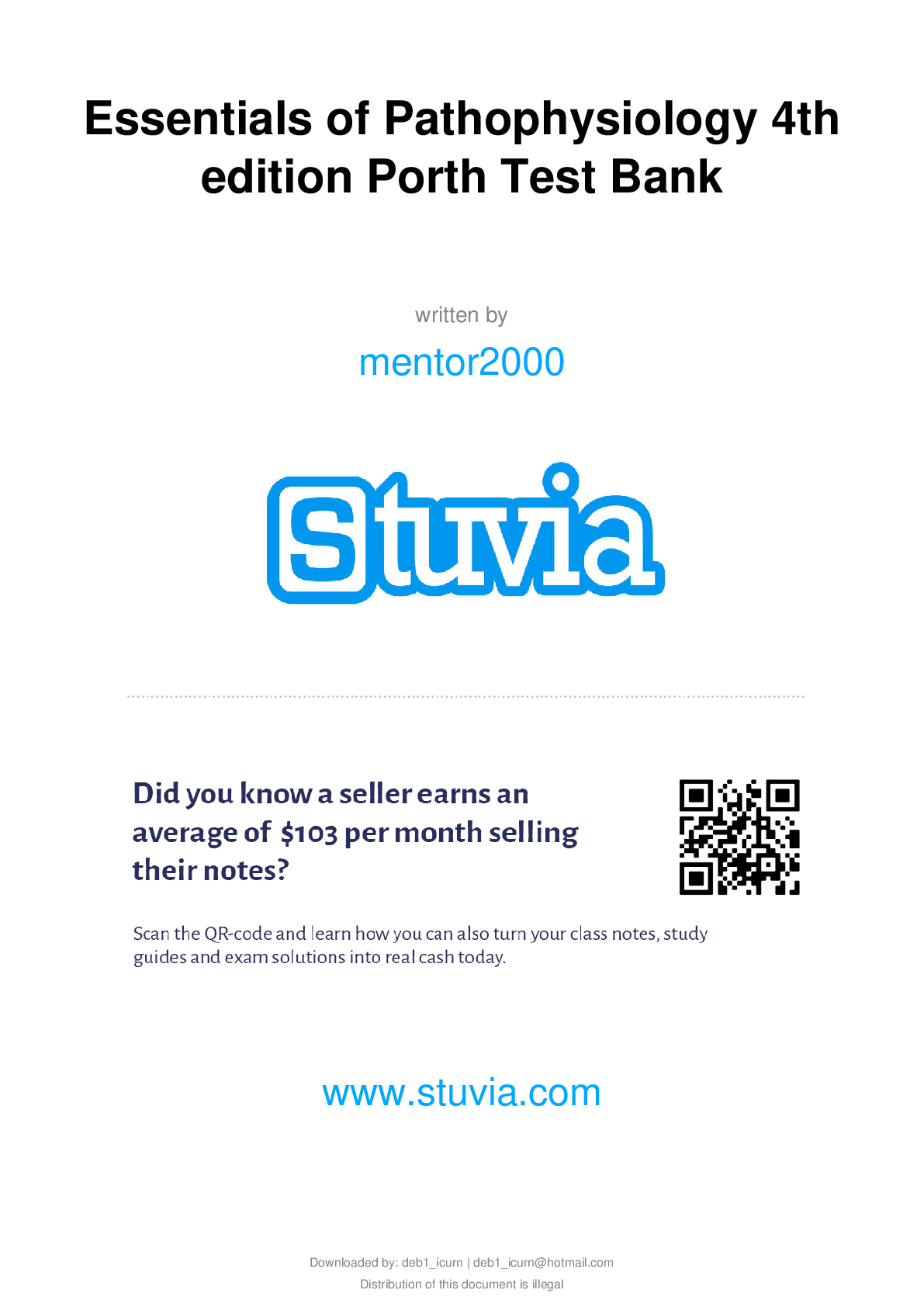
.png)

.png)
.png)
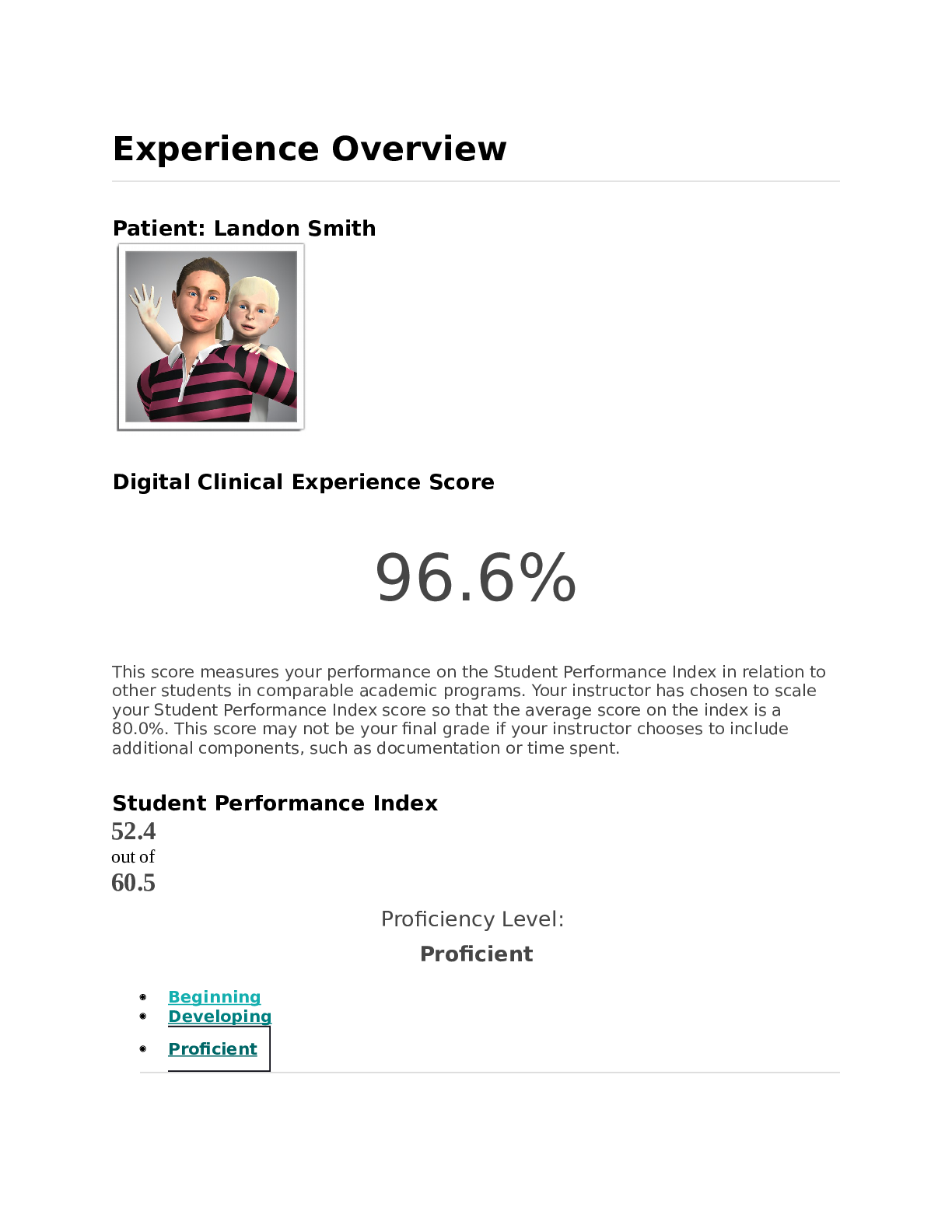
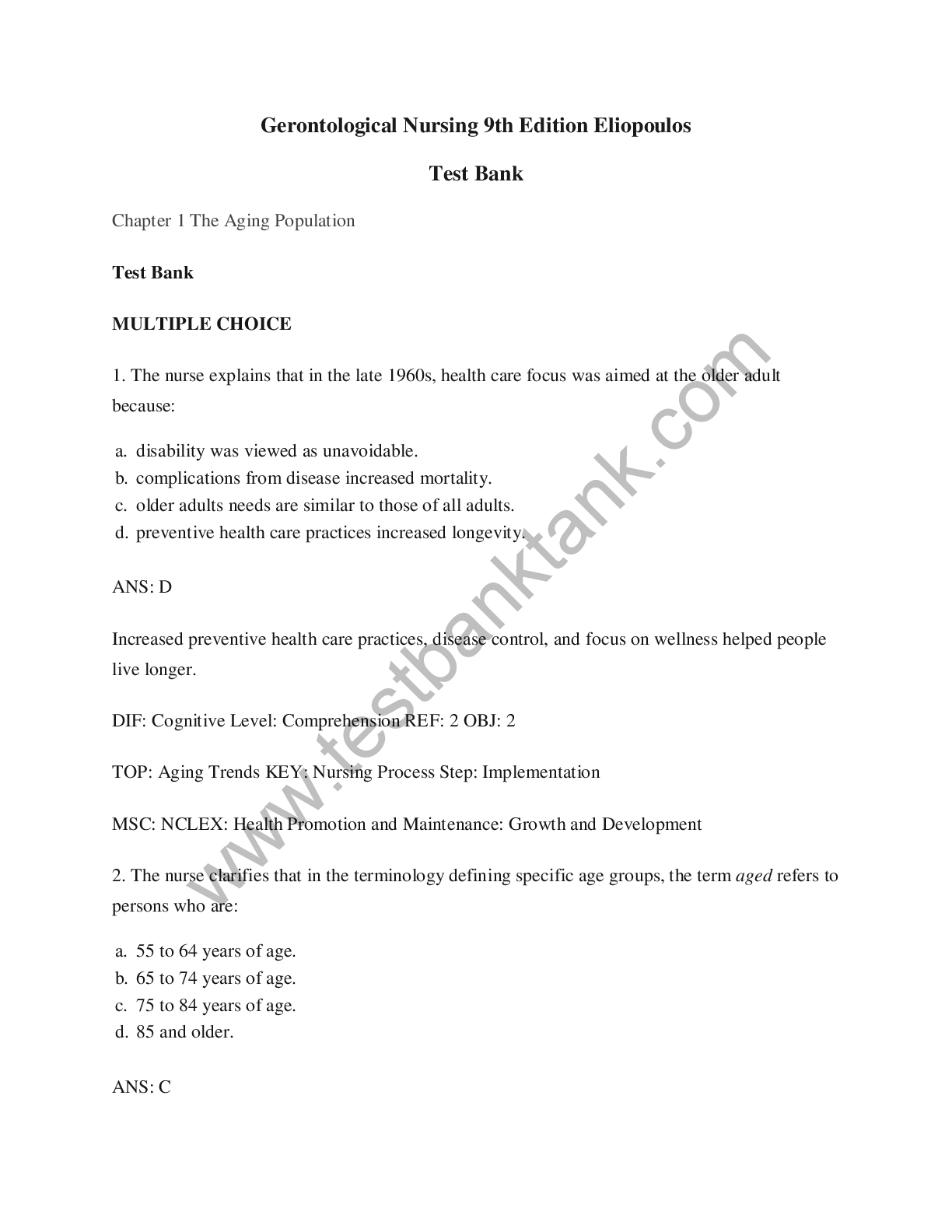

.png)
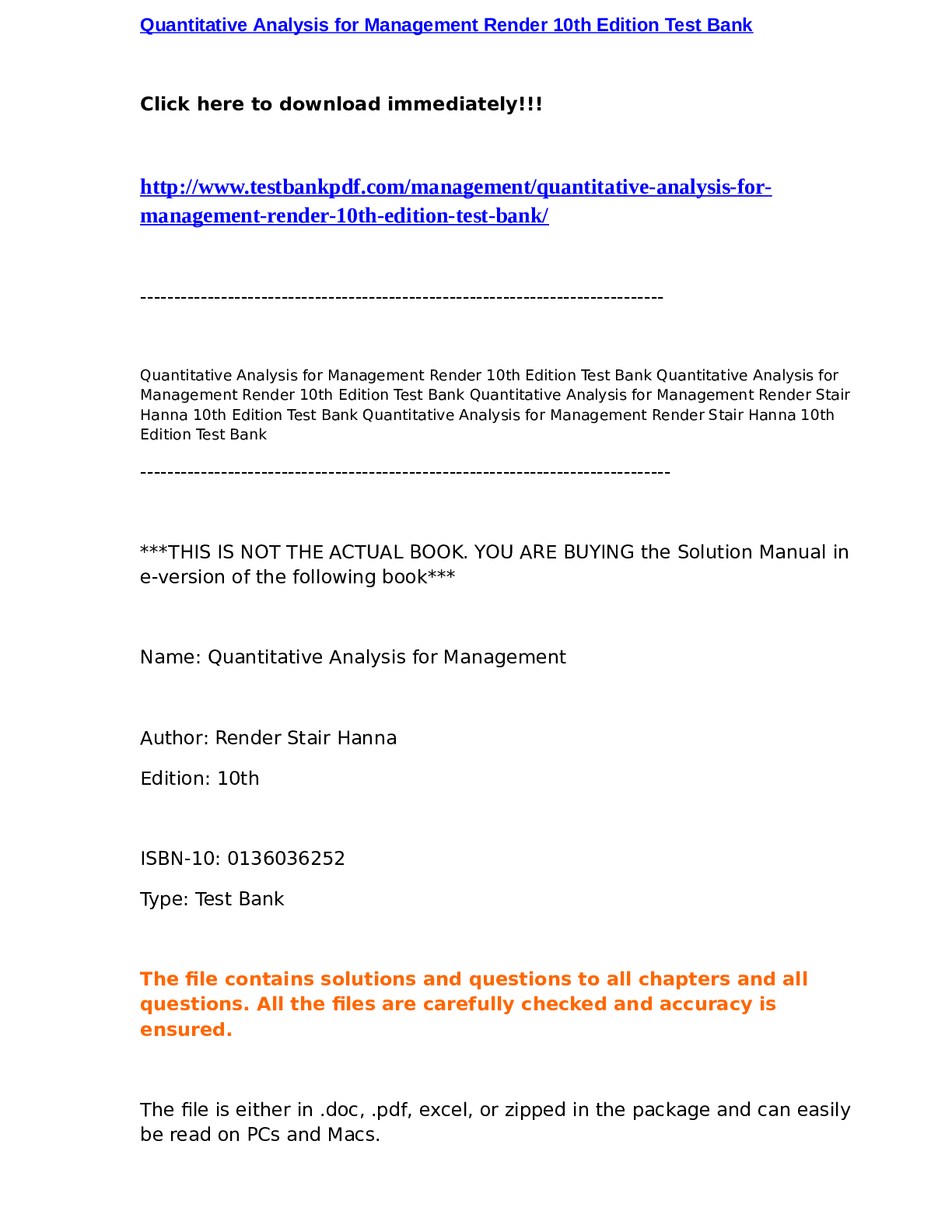
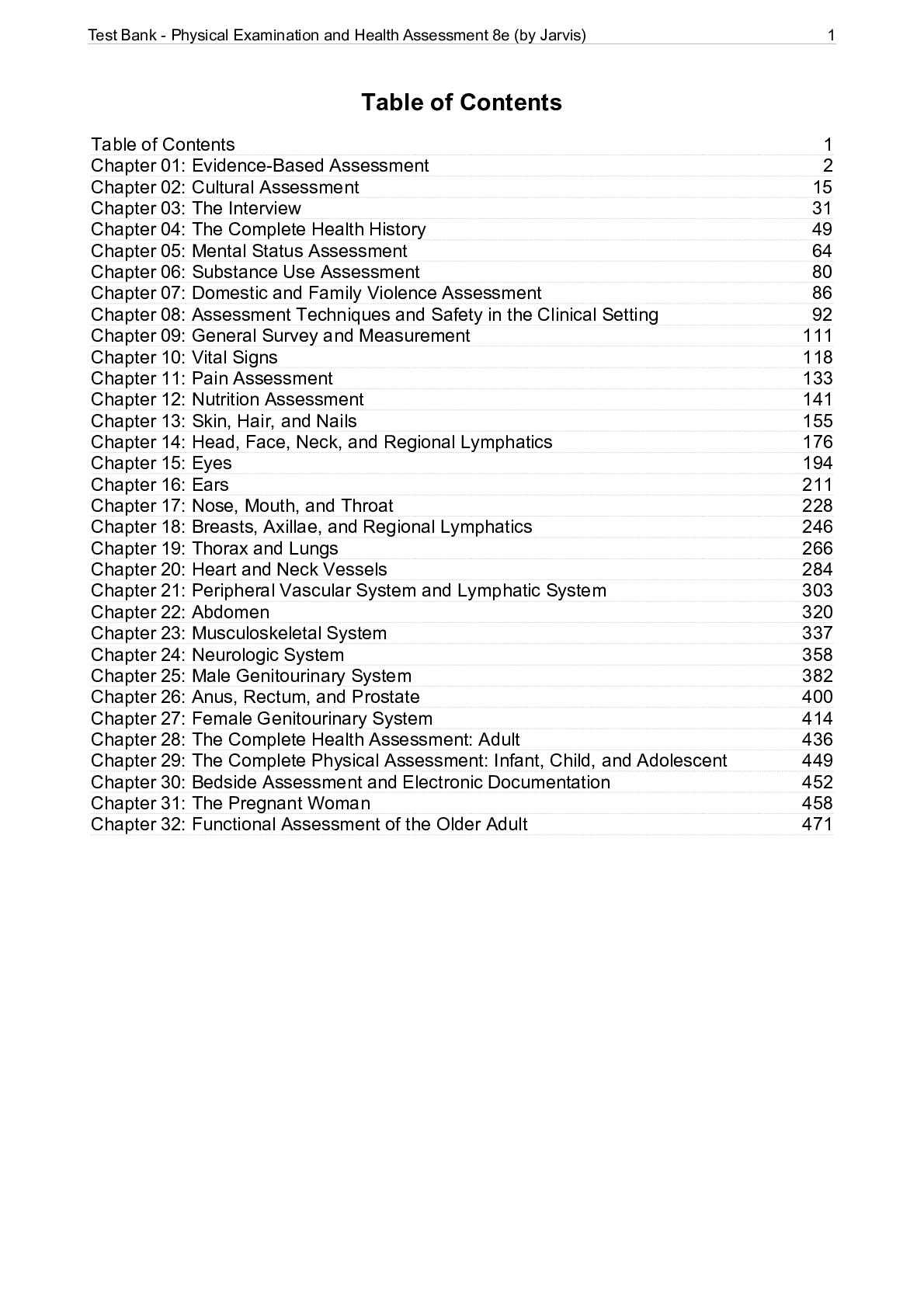
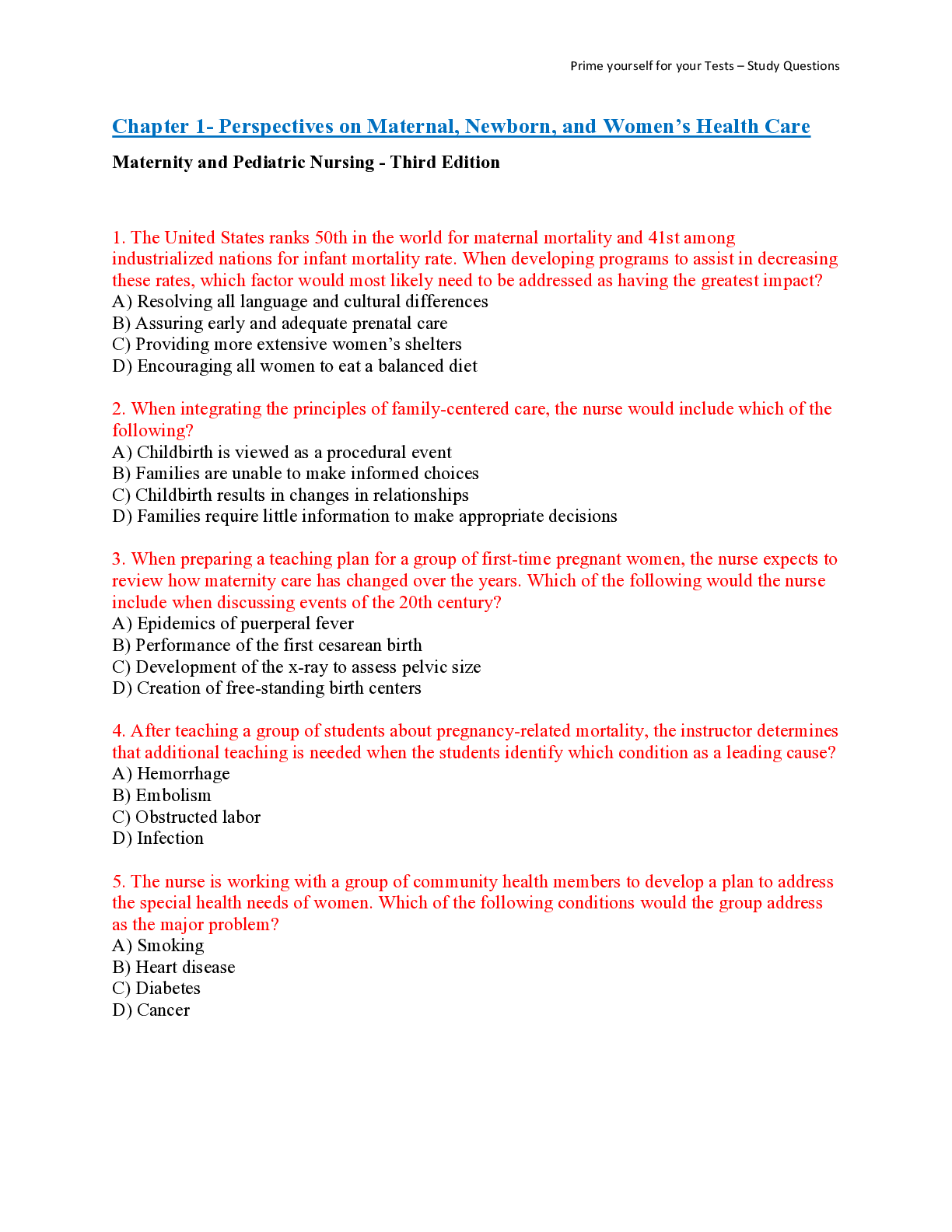
.png)
.png)
